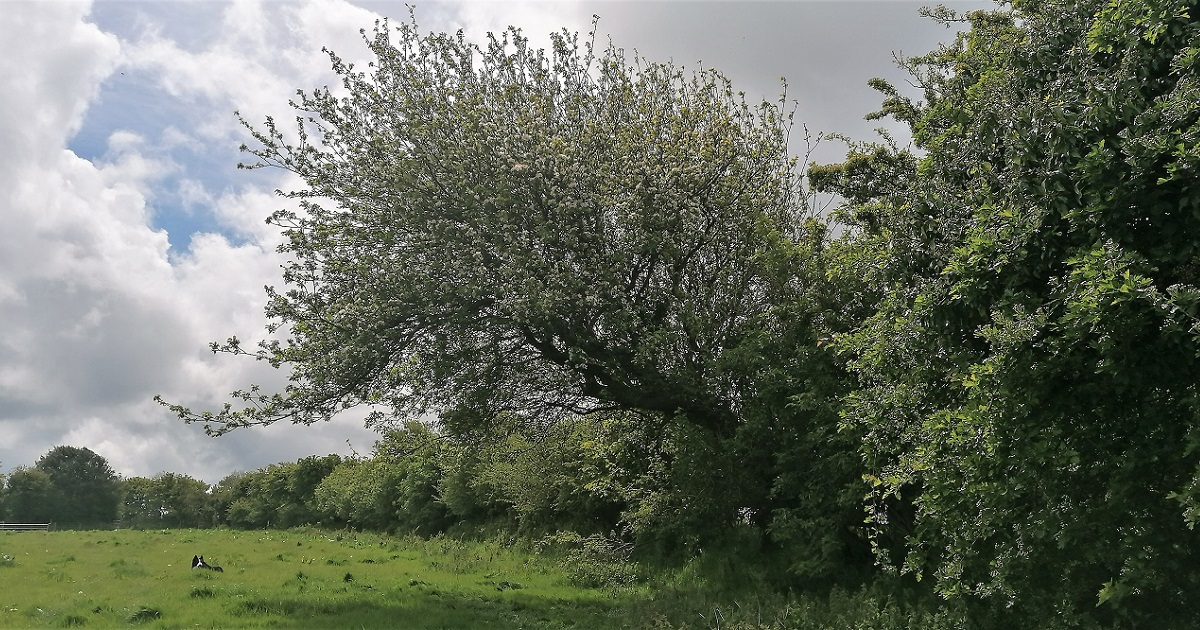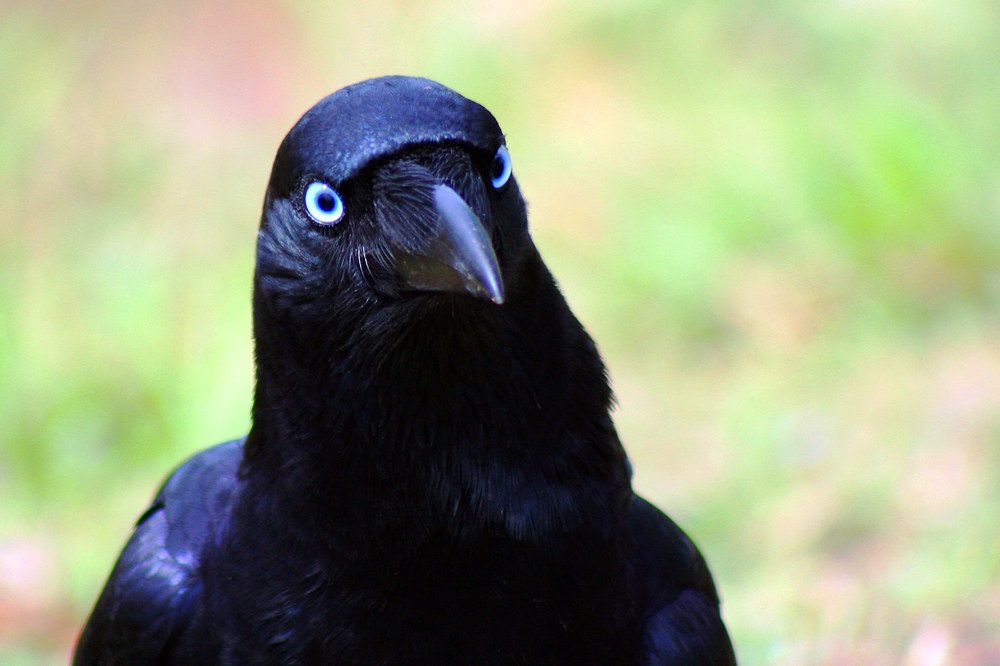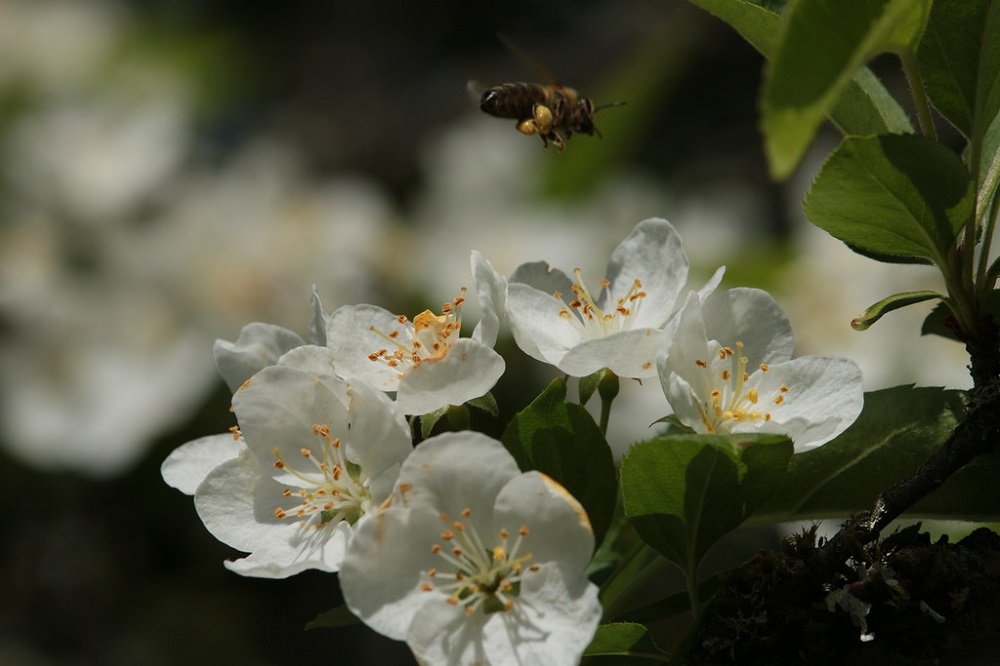Cynefin – A Sense of Place: Nests – part one

‘…and most I like the winter nests
deep hid
That leaves and berries fell into…’
(Edward Thomas)
Gaynor Funnell
February has always been my least favourite month. Even though it’s the shortest – ‘y mis bach’, the little month – it seems to go on forever.
As the last month of winter, it bridges the gap into spring, when we’ve had enough of gales and rain and mud and long for warmth and sun and the green of new life.
By the time February comes, every leaf that didn’t fall naturally in the autumn has been pulled from its home by the winter storms and now the only thing to be seen in the denuded branches are the remains of bird nests clinging tightly to their hosts.
Today is the first day of the month which is the beginning of the Celtic celebration of Imbolc, and the festival of Brigid, a goddess who brings light and life to the land. It’s a rare, pale-sunshine day, a day when you start to believe that change is on its way.
Walking across the fields, the ground underfoot isn’t quite as claggy, the breeze blowing from the sea not so raw.
Tree trunks and branches are black-soaked, the hedges a thickness of brown. But if you look close enough, tiny buds of hawthorn are preparing to emerge, and an occasional hazel catkin, safe in the hollow of a protective arm of ash, trembles, naked in the cold.
Amongst the yards of hedges that enclose, bisect, protect and divide the fields, five apple trees are scattered amongst them. I’m not sure if they’re wild apples or crab apples, but prefer to think of them as the throw-away result of a farmer’s lunch – maybe an apple he’d eaten along with some bread and cheese – or one a child ate whilst out playing.
Crow’s nest
There’s a single apple tree growing near the cromlech in Rhiannon’s field, disrupting the head-high hedge line. Thankfully, the farmers of before left it alone when they cut the hedge every autumn.
The tree is old and has lost many branches and there’s a dog-leg of a trunk that reaches into the field at just the right height for the sheep to scratch against.
Silver and sage-green lichen smother its older branches, which are covered in a bridesmaid pink-and-white froth of blossom in May and by handfuls of rough, russet-green fruit in September. They are haribo-sour to us but the blackbirds and fieldfares seem to enjoy them.
I make apple jelly from them every autumn, either blending them with sloes from the blackthorn growing at the feet of the apple tree to make a tart purple jelly that wobbles when you touch it and which is good to eat with cheese, or with the mint that grows like a weed amongst the roses and is good to eat with anything.
On top of this tree is a crow’s nest, holding on with bony fingers. It’s more like a collection of sticks rather than a well-designed home and is haphazard and large and too high for me to see the reported lining of moss and grass and anything else the crows find that softens and protects.
A crow’s nest takes two weeks to build and is home to the parents and their young for only nine. It is rarely re-used but can be added to over the following years if trees are sparse in the area.
In spring, the ground underneath becomes littered with small branches and twigs. These are rejects – the crow is always selective in his choice of building material. He likes ones that are HB pencil-sized and will rarely fly down and select one he’s discarded. A reject is always a reject.
Contemplation
The so-called crow’s nest used as a lookout on the top of a ships mast may have originated from the Viking tradition of carrying crows on their long voyages, which they released in periods of poor visibility knowing the crow would fly towards land. Or it may just be that the small barrow-like contraption seen from the deck looked like a nest.
Crows are members of the corvid family, which includes ravens, choughs and jays. They don’t walk but strut, puffing their chests out like a cockerel.
They have glistening stygian feathers, iridescent like the inside of a mussel shell when the light falls on them, and their beaks are long and pointed and curve down slightly at the end.
They are intelligent beings and can remember people’s faces, so you must treat them with respect – they can apparently relay their displeasure to other crows if you don’t. There might be a reason why a group of crows is called a murder.
If one of their flock dies, they mark the event by standing in a circle around their fallen companion as if in contemplation. Scientists believe they do this so they might learn more about why the bird has died rather than as a sign of distress.
If you study a crow even for a short time, there is something otherworldly about them; they seem to be at the fringes of our world looking in. Max Porter’s Grief Is a Thing With Feathers, and Crow by Ted Hughes, both use Crow as a metaphor for grief, death and life.

Keepers of secrets
The crow becomes interchangeable with ravens in mythology, both being big, black birds, and are seen as birds of transformation, keepers of secrets, tricksters and also harbingers of death.
When King Arthur was killed, his spirit supposedly passed into the chough, whose legs and beak turned red with his blood. The chough is a rare bird, found mainly on the western coastlines of Wales, Cornwall, Ireland and Brittany, interestingly the so-called Celtic nations. I’ve seen them and heard their distinctive call (which is a bit like a wheezy cough) in nearby Ceibwr and at Strumble head, further along the coast.
Last year, a young crow, dark-grey and tousled around the edges, became tangled in an old and twisted hawthorn, one foot caught on something out of sight. It remained still as I approached, which was unusual – most birds will sensibly try to fly away when a human approaches.
Unwinding the cord which had become wrapped around the foot, the bird stared at a point above my head with forget-me-not blue eyes, and remaining still, staring unblinkingly at the sky until it was safe to fly away. It was almost as if by not acknowledging me, I didn’t exist. I hadn’t realised that young crows have blue eyes, like human babies.
Immortality
There are as many myths and legends associated with the apple tree as there are with crows. They are considered to be the oldest tree of all and represent immortality, their fruit being of the otherworld and of the gods. They symbolise the giving of love and are represented by the goddesses Venus and Olwen.
According to legend, the apple orchards of paradise were known as the ‘Isle of the blessed’ and they housed the tree of knowledge upon which three sacred apple trees grew. The serpent that guarded the trees and the knowledge of the seasons was the goddess Ceridwen.
In the garden of Eden, the serpent became representative of the woman as a temptress, whilst the apple tree became the symbolic fruit of the downfall of man.
The fairy-tale of Snow-White mirrors the story of the poisoned apple representing seduction, false knowledge and wickedness
The mythical island of Avalon, Ynys Afallach, in Welsh, means the Isle of Apples, and was ruled by the enchantress Morgan le Fey and is reputedly where King Arthur was taken to heal from his wounds. The wizard Merlin was believed to have worked in a grove of apple trees guarded by birds.
During the Welsh Cad Goddeu (the Battle of the trees), the apple was described as the ‘most noblest tree of all’.
Druids wands were made from apple or yew and the fact that mistletoe often grows amongst its branches, made the apple a tree to be revered, mistletoe being another sacred plant. The star shaped core seen when you cut an apple in half meant it was seen as a natural pentagram and was often used in magical rituals.
Abundance of love
Although an apple tree was seen as symbol of plenty, felling one was considered to bring bad luck, and burning one sacrilegious. In Brehon law, it was one of their Chieftain trees, and the fine for felling one was three cows.
The reason that lightening rarely splits apple trees is believed to be because it contains an abundance of love, and for both of these reasons, people planted apple trees near to their homes.
According to Dr Edward Bach, a homeopath and bacteriologist, who developed the use of flowers as natural remedies, the essence of apple is used for curing self-doubt, despondency, obsession, over-anxiousness and when getting stuck over details.
Perhaps these qualities influenced Newton which, after seeing an apple fall whilst he was sat under an apple tree, led to his observations on the theory of gravity – the tree, a ‘Flower of Kent’ variety, still exists, protected by the National Trust in Lincolnshire.
The apple tree is a member of the Rose family, and all domestic apples are the same species, Malus pumila, which originated in Tien Shan, in north-western china.

Merlin’s apple
Bees can smell an apple in bloom from a third of a mile away, and in May, standing underneath the tree, I watch them working, and when close enough, see what colour their pollen bags are.
Apple pollen is Tango-orange, brighter than the chestnut brown from the gorse, the darker brown of the red clover, the yellow brown of the wild cherry. The honey they make from the apple is light gold in colour and not too sweet and it carries just a tang of apple. Ninety-seven percent of all pollination in orchards is carried out by honeybees, so many commercial orchards keep bees as well.
In 1998, the so-called ‘rarest apple tree in the world’, Afal Ynys Enlli, was discovered not too far from here, on the windswept island of Bardsey in North Wales, and is supposedly the only remnant of a monastic orchard.
It is also known as Merlin’s apple as where it was found – opposite a mountainside with a cave – is reputedly where Merlin is buried in a glass coffin. Now available commercially, I have a small tree growing alongside an Annie Elizabeth, a Rosemary Russet and a Fiesta in Gwair field. Unlike the others, it hasn’t borne any of its pink-streaked fruit yet – maybe this year.
Birds-eye view
A thing of beauty, history, mythology and culinary use, how important are these trees today? How many of us see these things behind the blossom and the fruit? I’d like to think Crow did and chose this apple tree deliberately – they are clever birds, after all – but it was probably chosen because when perching high in their nest, they have a 360-degree birds-eye view over Rhiannon and Cromlech fields, the two fields lying either side of the hedge, and it’s near enough for them to be able to raid the bird feeder when they felt like it.
One crow waits for me every morning as I fill them up. He’s always in the same place and struts behind me as I add fat balls, which are his favourite. As soon as I leave, he’ll race the magpie onto the feeder, swinging iridescently from side-to-side like an over-large trapeze artist – he’s too heavy for it really.
The guinea fowl try to rush him away, wings outstretched and alarm-calling, but he stands his ground, as do they.
In a distant life we walked alongside lions and elephants, they seem to say, you don’t scare us…
But I am immortalised in stories and legends and walk with the gods, replies Crow…
Gaynor Funnell is the winner of the Nigel Jenkins award for 2022. We are delighted to be publishing a series about Penbanc over the coming months, with support from the H’mm Foundation.
You can read the serialisation so far here and you can discover other writing by Gaynor on Nation.Cymru by following her link on this map
Support our Nation today
For the price of a cup of coffee a month you can help us create an independent, not-for-profit, national news service for the people of Wales, by the people of Wales.




